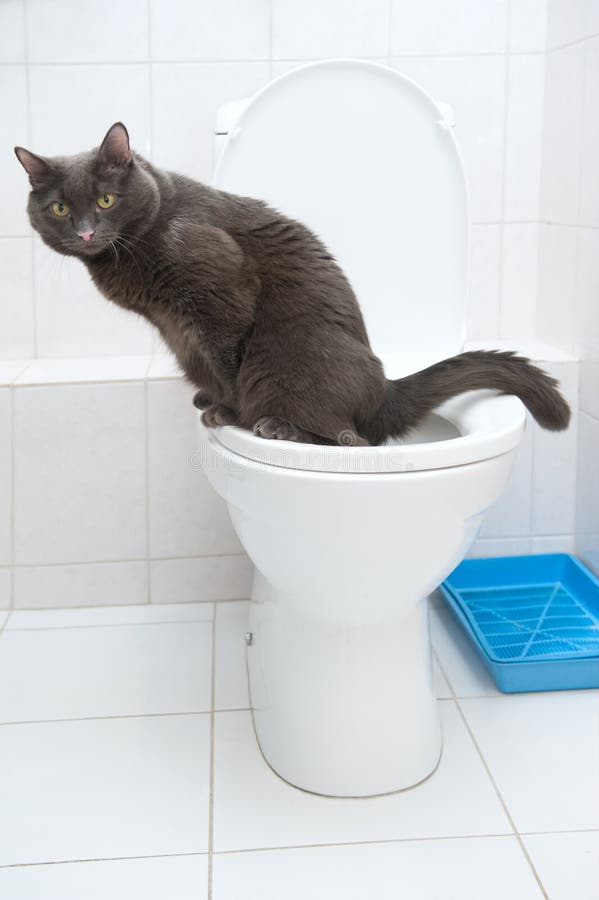The Consequences of Flushing Cat Poop Down Your Toilet - Protect Your Plumbing
The Consequences of Flushing Cat Poop Down Your Toilet - Protect Your Plumbing
Blog Article
We have found this great article about Can You Flush Cat Poo or Litter Down the Toilet? listed below on the web and think it made perfect sense to share it with you in this article.

Intro
As pet cat owners, it's important to be mindful of exactly how we dispose of our feline friends' waste. While it might seem practical to purge pet cat poop down the toilet, this method can have damaging consequences for both the environment and human health and wellness.
Alternatives to Flushing
The good news is, there are much safer and much more liable methods to get rid of pet cat poop. Think about the complying with alternatives:
1. Scoop and Dispose in Trash
One of the most typical method of getting rid of feline poop is to scoop it into an eco-friendly bag and throw it in the garbage. Make certain to utilize a specialized trash scoop and take care of the waste promptly.
2. Usage Biodegradable Litter
Choose biodegradable pet cat litter made from products such as corn or wheat. These trashes are eco-friendly and can be securely thrown away in the garbage.
3. Bury in the Yard
If you have a yard, think about burying pet cat waste in a marked area away from vegetable yards and water sources. Make sure to dig deep adequate to stop contamination of groundwater.
4. Mount a Pet Waste Disposal System
Purchase a family pet garbage disposal system particularly developed for cat waste. These systems make use of enzymes to break down the waste, lowering odor and ecological impact.
Wellness Risks
Along with environmental worries, purging pet cat waste can additionally position health and wellness threats to humans. Pet cat feces might consist of Toxoplasma gondii, a bloodsucker that can create toxoplasmosis-- a possibly serious ailment, specifically for pregnant women and people with weakened body immune systems.
Environmental Impact
Purging pet cat poop introduces hazardous pathogens and bloodsuckers into the water, presenting a considerable threat to water ecosystems. These pollutants can adversely impact marine life and concession water high quality.
Conclusion
Liable pet possession expands beyond giving food and shelter-- it additionally involves appropriate waste management. By avoiding flushing feline poop down the toilet and selecting alternative disposal techniques, we can minimize our environmental footprint and safeguard human wellness.
Why Can’t I Flush Cat Poop?
It Spreads a Parasite
Cats are frequently infected with a parasite called toxoplasma gondii. The parasite causes an infection called toxoplasmosis. It is usually harmless to cats. The parasite only uses cat poop as a host for its eggs. Otherwise, the cat’s immune system usually keeps the infection at low enough levels to maintain its own health. But it does not stop the develop of eggs. These eggs are tiny and surprisingly tough. They may survive for a year before they begin to grow. But that’s the problem.
Our wastewater system is not designed to deal with toxoplasmosis eggs. Instead, most eggs will flush from your toilet into sewers and wastewater management plants. After the sewage is treated for many other harmful things in it, it is typically released into local rivers, lakes, or oceans. Here, the toxoplasmosis eggs can find new hosts, including starfish, crabs, otters, and many other wildlife. For many, this is a significant risk to their health. Toxoplasmosis can also end up infecting water sources that are important for agriculture, which means our deer, pigs, and sheep can get infected too.
Is There Risk to Humans?
There can be a risk to human life from flushing cat poop down the toilet. If you do so, the parasites from your cat’s poop can end up in shellfish, game animals, or livestock. If this meat is then served raw or undercooked, the people who eat it can get sick.
In fact, according to the CDC, 40 million people in the United States are infected with toxoplasma gondii. They get it from exposure to infected seafood, or from some kind of cat poop contamination, like drinking from a stream that is contaminated or touching anything that has come into contact with cat poop. That includes just cleaning a cat litter box.
Most people who get infected with these parasites will not develop any symptoms. However, for pregnant women or for those with compromised immune systems, the parasite can cause severe health problems.
How to Handle Cat Poop
The best way to handle cat poop is actually to clean the box more often. The eggs that the parasite sheds will not become active until one to five days after the cat poops. That means that if you clean daily, you’re much less likely to come into direct contact with infectious eggs.
That said, always dispose of cat poop in the garbage and not down the toilet. Wash your hands before and after you clean the litter box, and bring the bag of poop right outside to your garbage bins.
https://trenchlesssolutionsusa.com/why-cant-i-flush-cat-poop/

I hope you enjoyed reading our topic about How to Dispose of Cat Poop and Litter Without Plastic Bags. Thanks for finding the time to browse our blog. Please take a moment to distribute this post if you enjoyed reading it. We appreciate reading our article about How to Dispose of Cat Poop and Litter Without Plastic Bags.
Book Services Report this page